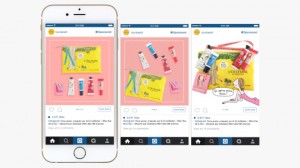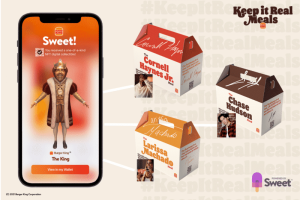In a noisy, hyper-competitive market, how do you stay ahead of your rivals? Contributor Kevin Bobowski explains why customer lifetime value and building a customer-obsessed organization are essential.

What is your company’s competitive advantage?
It’s a simple question but a difficult one to answer. And it’s getting more difficult to answer by the day. Building a competitive advantage in today’s hypercompetitive world is elusive.
Traditional sources of a competitive advantage are no longer sustainable or relevant. Lower prices are easily replicated in real time. Distribution has become democratized. Fast followers eat away at unique technical advantages in days, weeks and months.
Size and mass are a path to a sustainable competitive advantage. Yet even mass is eroding as a competitive advantage.
Digital disruption is happening to all companies, big and small. Even the global giants in the consumer packaged goods (CPG) space face challenges from upstart competitors. Direct to consumers (D2C) companies — a whole new wave of businesses — are emerging as big disrupters in the CPG sector.
Digital disruption is here is stay and is only accelerating
Let’s face it. Digital disruption is here to stay, and the martech landscape is not immune.
Roughly $100 billion has been spent on martech over the last decade, according to Foundation Capital’s Ashu Garg. Consolidation in this space is inevitable; over the last four years, acquisitions have outpaced new company formation.
Building a customer-obsessed organization
So how do marketers — and companies — cut through this noisy, competitive market and carve out a sustainable competitive advantage?
It starts by building a customer-obsessed organization — part culture, part organization and part data. This is no small feat. It’s an ongoing process that requires coordination from every department.
It also requires thinking differently about success. Instead of vanity metrics such as growth rates or leads — which are both important — marketers must go deeper to find a metric that truly represents the work of the entire business and reflects the health of the company and its ability to become a customer-obsessed organization.
First, organize your company around the customer. Delivering a great customer experience and delivering value to consumers — in a way that’s differentiated — requires the efforts of the entire company. Every department must work together. Doing so provides companies with the agility needed to respond to customers and market opportunities.
Secondly, build an organization that enables every employee to deliver customer success. This structure supports employees so they can do their very best work and build long-term and happy customers.
Finally, companies — and the marketing department — must get closer to customers by understanding their needs and intent better than the competition. This is all about data. The closer you are to your customers, the easier it becomes to respond to their needs.
Data unlocks knowledge about customers’ needs and provides employees with the knowledge to deliver a successful experience. With great customer data and a company organized around the customer, businesses are in a position to deliver a differentiated customer experience.
Why customer lifetime value matters to your business
Lifetime value (LTV)/cost of customer acquisition (CAC) is one of the most inclusive metrics to be found. Improving LTV/CAC requires that each facet of the business works in lockstep to deliver value to customers. That’s why the metric is so valuable.
Instead of metrics for one element of the business — cost of acquisition — which might only involve sales and marketing, LTV/CAC reflects the entire customer life cycle and measures everything including product, marketing, sales and customer success.
How do I improve LTV/CAC?
This where customer success (service) and financial performance intersect. A higher LTV/CAC means you are delivering value for customers — and often around your brand promise. A higher LTV/CAC can be indicative of a stronger brand. A strong brand means less commoditization and greater pricing flexibility. It’s the metric that every CEO should be obsessed with.
Improving LTV/CAC starts with a simple concept. Know your ideal customer profile and what you are delivering to them: your brand promise. A detailed understanding of your ideal customer profile cascades into many facets of the business, including:
- More efficient customer acquisition. Don’t acquire customers who will never be happy with your product.
- Higher sales productivity. Deliver higher win rates by understanding the needs of your customers.
- Higher retention rates. Craft a customer onboarding process and life cycle that are built for your ideal customer profile and their needs, and enable them to see value in your product/service faster.
- Revenues per customer. Operationalize upsell and cross-sell programs with strong ties to the customer life cycle and the needs of the customer.
Talking with customers and getting their feedback is important, but don’t forget to lead and inspire them, too. Know where the market is going, and lead customers in that direction. That’s all part of helping your customers succeed.
Change is constant, and it’s happening quickly. Digital disruption is happening to everyone. Future-proofing your customers is an important part of delivering value to them. After all, especially in martech, customers want to work with winners and thought leaders. It’s good for their careers and for their businesses, too.
Chasing shiny objects
Using LTV/CAC serves as an anchor, too — a good anchor. It keep you focused on what really matters: delivering value to customers. It keeps you from getting distracted from the shiny new objects that tempt us every day.
Take, for example, Account-Based Marketing (ABM). It’s all the rage. Many marketers are implementing ABM, but how do you know it’s successful for your business?
A successful ABM program should result in improved LTV/CAC. ABM can help drive more cost-effective marketing, sales, higher retention rates, and more revenues per individual customer. LTV/CAC is the ultimate validation of your ABM strategy.
So what’s next?
Here is a helpful checklist to begin your journey of building a customer-obsessed organization.
- Track your LTV/CAC. If you’re calculating LTV/CAC, congrats! You are well on your way. If not, start there. There are plenty of great resources to unpack everything that’s included in this metric.
- Build/revisit your ideal customer profile. How much do you know about your most successful customers? What are their similar characteristics? What’s dissimilar about them? Building personas is another important exercise. You can start small but go as deep and detailed as you want.
- Map the customer journey from the eyes of your consumers. What is the pre-sales experience like at your company? How is onboarding and the post-sales experience? At which points in the customer life cycle are you delivering value?
- Ask around. Your customer-facing employees will tell you exactly what’s working and what’s not. These folks work with customers every day and will have incredible knowledge about them and whether your company is doing a good — or not-so-good — job of supporting their work with customers.
What does it all mean?
Building a customer-obsessed organization and successful customer life cycle is no small feat. But imagine the power of treating every customer so well that they themselves become brand ambassadors and advocates. Some call it “Flipping the Funnel” — having customers market for you and your brand.
Offering real value means understanding customers and their needs. When you deliver real value to your customers time and time again, you build a relationship with them that will keep them coming back.
And when you consistently impress your customers over the course of that relationship, you can guarantee that their friends and colleagues are going to hear about it.
Some opinions expressed in this article may be those of a guest author and not necessarily Marketing Land. Staff authors are listed here.
Marketing Land – Internet Marketing News, Strategies & Tips
(60)
Report Post





